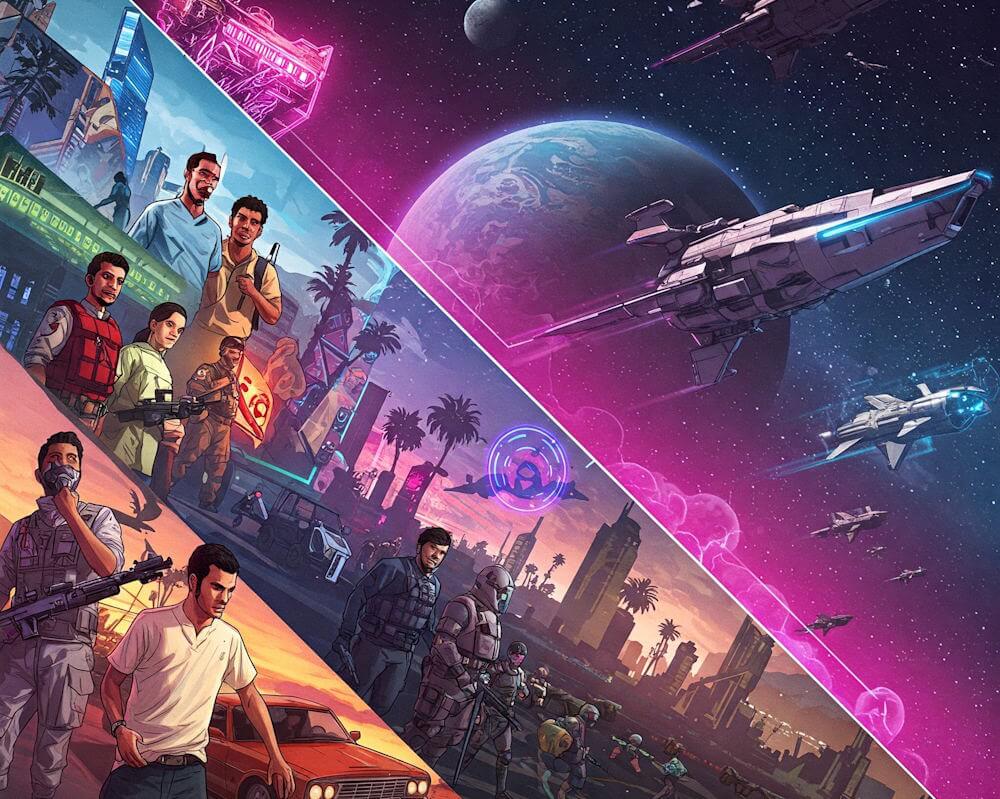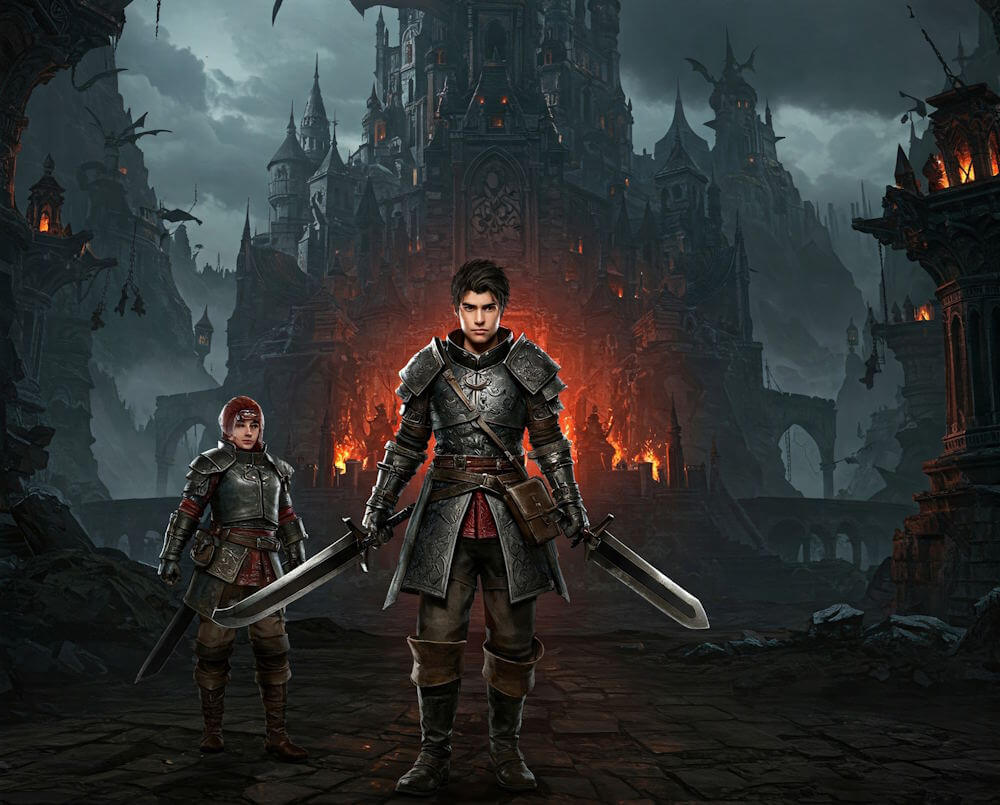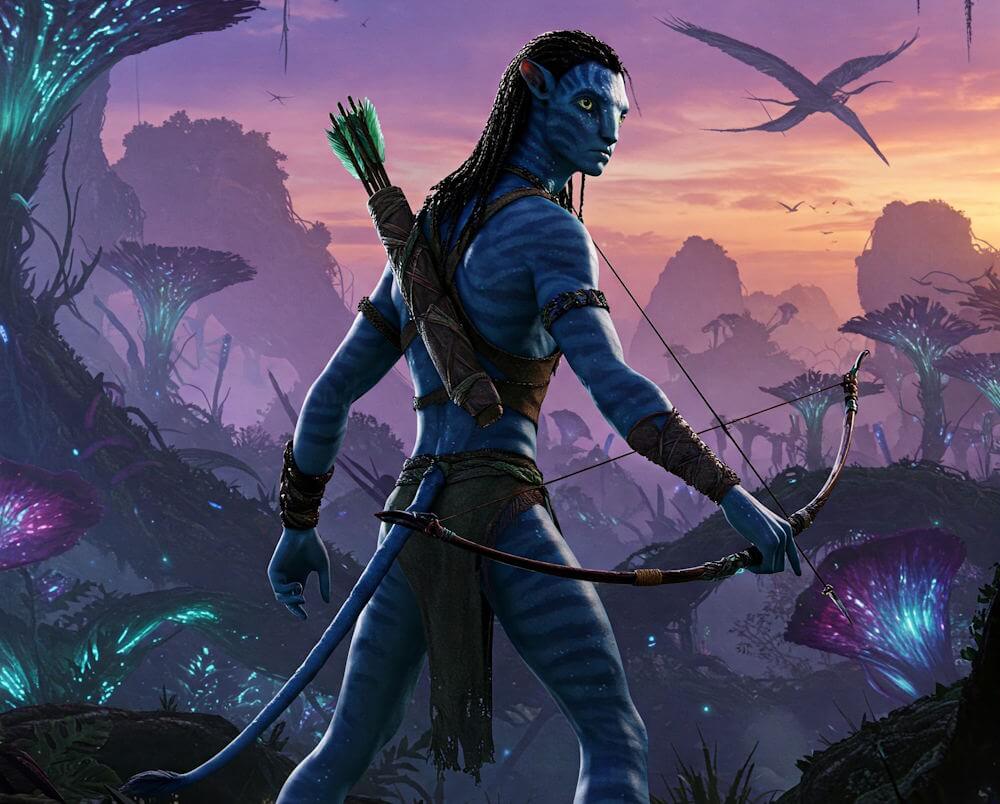Introduction to Open World Gaming
Open world gaming represents a revolutionary shift in video game design, characterized by expansive environments that allow players unparalleled freedom to explore and interact with the game world. Unlike traditional linear gameplay, where players follow a predetermined pathway, open world games present an interconnected landscape filled with diverse opportunities, challenges, and narratives. This genre grants players the agency to approach objectives in various ways, fostering creativity and personalized experiences.
The allure of open world gaming lies in its immersive environments that replicate realistic settings, from sprawling cities to uncharted territories. Players can engage with the game at their own pace, choosing to undertake main quests, side quests, or simply roam freely to discover hidden treasures or interact with non-playable characters (NPCs). The vastness of such worlds often creates a sense of adventure and wonder, encouraging exploration and experimentation. This nonlinear approach not only enriches gameplay but also allows players to forge their unique journeys, enhancing the overall emotional investment in the game.
The popularity of open world gaming has surged over the years, evident by the success of franchises such as Grand Theft Auto, The Legend of Zelda, and The Elder Scrolls. Each of these titles has demonstrated the potential of expansive game design to captivate audiences. The evolution of open world design reflects technological advancements and growing player expectations for depth and interactivity. As developers continue to push boundaries, we see innovations in storytelling, world-building, and player agency that redefine what is possible in gaming.
Thus, the dynamic and engaging nature of open world gaming not only attracts players but also lays the foundation for further exploration of how this genre has transformed over the years, culminating in contemporary titles such as Starfield.
The Birth of Open World Gaming: A Look at Early Titles
The origins of open world gaming can be traced back to the early 1990s, with the advent of groundbreaking titles that set the foundation for expansive game design. One of the most influential early examples is “The Legend of Zelda: Ocarina of Time,” released in 1998. This game introduced players to a vast, interconnected world filled with quests, non-linear exploration, and a variety of environments ranging from lush forests to arid deserts. The freedom presented to players to tackle challenges in almost any order marked a significant departure from the linear gameplay that predominated earlier video games.
“Ocarina of Time” utilized the concept of an open world by allowing players to engage with the narrative and environment at their own pace. Its innovative mechanics, such as time travel and dynamic weather, enhanced the open world experience, encouraging exploration and discovery. The game not only set a high standard for its successors in action-adventure genres but also laid essential groundwork for future open world titles.
As demonstrated by “Zelda: Ocarina of Time” and “GTA III,” the birth of open world gaming has been characterized by the presentation of expansive, interactive environments that beckon players to explore and experiment. These pioneering titles have significantly shaped the landscape of modern gaming, influencing countless developers and future games in the open world genre.
Grand Theft Auto and the Rise of Open World Complexity
Released in 1997, the ‘Grand Theft Auto’ (GTA) franchise has dramatically influenced the evolution of open world game design. The initial installments set the foundation for a genre that values freedom and exploration. However, it was with the advent of ‘Grand Theft Auto III’ in 2001 that the series truly changed the landscape of video games. This title introduced a 3D open world in Liberty City, allowing players to navigate through a vibrant environment filled with diverse characters, intricate storylines, and a plethora of engaging side activities. The subsequent entries in the series, including ‘GTA: Vice City’ and ‘GTA V’, further expanded the complexities of open world design.
A key feature of the GTA series is its commitment to player agency. Players are granted the ability to traverse an expansive urban environment at their discretion, enabling a level of interaction and immersion rarely seen in prior gaming experiences. The series employs numerous mechanics that enhance this feeling of freedom, such as a dynamic day-night cycle, a realistic weather system, and a responsive AI that populates the game world with engaging NPCs. This design philosophy has inspired many developers seeking to create immersive environments that resonate with players.
In addition to its open world mechanics, GTA has become renowned for its storytelling methods. The series adeptly combines narrative depth with satirical commentary on contemporary society. Players often find themselves navigating morally ambiguous scenarios where their choices affect the unfolding events. This not only shapes their experience but also creates a more profound emotional connection to the game world. Through these complex interactions, the Grand Theft Auto franchise has set a benchmark for future open world games, encouraging developers to prioritize storytelling and player engagement in their designs.
The Technological Advances Driving Open World Design
The evolution of open world design has been significantly influenced by a series of technological advancements that have reshaped how developers create immersive gaming experiences. One of the most crucial factors is the improvement in graphics technology. Modern rendering techniques enable higher levels of detail, allowing for the creation of vast, intricate environments that were once deemed impossible. With the advent of powerful graphics processing units (GPUs), developers can now incorporate realistic textures, dynamic lighting, and sophisticated particle effects, all of which contribute to a more believable game world.
Moreover, advancements in processing power have played a pivotal role in enhancing open world design. Contemporary consoles and PCs are equipped with multi-core processors that can handle complex calculations at high speeds. This allows for larger game worlds that can be populated with numerous non-player characters (NPCs), each with distinctive behaviors and interactions. As a result, players experience a living, breathing world where their actions can lead to diverse outcomes, fostering a sense of agency and immersion.
Artificial intelligence (AI) capabilities have also undergone remarkable transformations. Today’s AI systems enable NPCs to exhibit more nuanced behaviors, creating realistic interactions that enhance player engagement. Through the integration of machine learning, AI can adapt to individual gameplay styles and make the environment feel responsive and dynamic. Furthermore, advanced procedural generation techniques allow for the spontaneous creation of content, maintaining player interest in expansive landscapes. This seamless blending of AI with environmental design facilitates the realization of features such as dynamic weather systems, which can drastically alter gameplay experiences.
In summary, the combination of improved graphics, increased processing power, and sophisticated AI capabilities has significantly advanced open world design. These technological innovations have allowed developers to create richer, more interactive environments, setting the stage for future explorations in gaming creativity.
The Impact of Player Freedom and Agency
Player freedom and agency are cornerstones of the open world design philosophy, shaping the experiences and engagement of gamers. The evolution of these concepts is particularly evident when analyzing how they have influenced key titles from the genre. In earlier games, such as the original Grand Theft Auto, player interaction was predominantly linear, with limited choice in how missions unfolded. However, as technology and design methodologies progressed, developers began to recognize the significance of empowering players with choices that impact their gameplay experience.
Modern open world games prioritize player choice, allowing them to approach missions and objectives in diverse ways. For instance, in titles like The Elder Scrolls V: Skyrim, players can choose from an array of character builds, govern their own playstyles, and even decide the fate of various factions within the game world. This level of agency cultivates a personal connection between players and the game, as their decisions visibly influence the narrative and environment. The freedom to explore different pathways not only enhances replayability but also fosters creativity, as players experiment with various strategies in achieving their objectives.
Moreover, games like Red Dead Redemption 2 further exemplify this trend, as players are not merely confined to mission structures but can engage with the world at their own pace. Choices made by the player can lead to different interactions with non-playable characters (NPCs), yielding realistic consequences and unique scenarios. Such design choices contribute significantly to a personalized gaming experience, making player agency a driving force in the open world genre. This evolution from rigid linearity to expansive freedom represents a crucial shift in how games are designed and experienced, paving the way for the future of player-driven narratives in the gaming landscape.
Exploration and Immersion: Lessons from Nature and Realism
Game design has witnessed remarkable advancements as developers have increasingly drawn inspiration from the natural world to enhance exploration and immersion in open-world environments. By incorporating realistic ecosystems, cultural elements, and historical references, designers create vibrant game worlds that resonate with players, offering experiences that go beyond mere interaction. The integration of various aspects of nature not only enriches the aesthetic appeal of a game but also fosters a sense of authenticity that players crave.
One prevalent method is the meticulous reproduction of real-world landscapes. This practice allows players to traverse environments that feel both familiar and unique. Designers often study geographical features, weather patterns, and the behavior of flora and fauna to capture the essence of diverse ecosystems. For example, the biomes in games like “The Legend of Zelda: Breath of the Wild” reflect actual ecological principles, allowing players to engage with the environment in meaningful ways, such as understanding how different areas affect activity and gameplay mechanics.
Moreover, cultural elements enhance immersion through storytelling and the incorporation of historical references. Many game designers examine local cultures and histories, integrating narratives that are rich with contextual understanding. This careful attention to detail enables players to experience the world as more than just a backdrop; it becomes a character in itself. Take for instance the cities in “Assassin’s Creed,” which are recreated with such precision that players can not only explore but also learn about the civilizations that once thrived there.
As technology continues to evolve, the intersection of game design and realism will likely deepen. The ongoing exploration of natural and cultural inspirations promises to yield even more engaging and immersive experiences. By grounding virtual worlds in relatable and authentic contexts, developers can create spaces where players feel fully engrossed and invested in their journeys.
The New Wave of Open World Design: Innovations in Narrative and Gameplay
The landscape of open world design has undergone significant transformations in recent years, notably enhancing narrative engagement and gameplay mechanics. Contemporary titles such as ‘The Witcher 3: Wild Hunt,’ ‘The Legend of Zelda: Breath of the Wild,’ and ‘Elden Ring’ have epitomized this evolution, setting new standards for player experience and storytelling complexity.
‘The Witcher 3’ has been widely acclaimed for its rich narrative depth and world-building, where players navigate a landscape filled with intricate lore and multifaceted characters. The game employs a branching narrative system that allows player choices to significantly influence outcomes, enhancing the immersive nature of the gameplay. This aspect gives players a sense of agency, establishing a deeper emotional connection to the world and its inhabitants.
Similarly, ‘Breath of the Wild’ introduces a level of environmental storytelling and gameplay interactivity previously unseen. The game empowers players with unprecedented freedom to explore the vast kingdom of Hyrule, solving puzzles and progressing through challenges at their own pace. Innovative mechanics, such as the use of physics and chemistry in gameplay, allow for creative problem solving, making each player’s journey unique. This approach encourages experimentation and exploration, redefining how players engage with the open-world concept.
‘Elden Ring,’ the collaborative effort of renowned creators from the ‘Dark Souls’ series, has further pushed boundaries in open world design through its intricate world interconnectedness and lore discovery. Players are urged to traverse a vast landscape filled with hidden lore and essences of former events, promoting exploration while weaving deep narrative threads. The combination of seamless world design and challenging combat ensures that players remain invested in their journey.
These titles reflect a significant shift in how open world games craft narrative and gameplay experiences, moving towards greater player immersion and interaction, while establishing a new benchmark for future innovations in the genre.
Starfield and the Future of Open World Gaming
Starfield represents a significant milestone in the evolution of open world design, reflecting the aspirations and advancements in game development. As one of the most anticipated titles, it marks Bethesda’s foray into a new cosmos of exploration and narrative depth. Set in a richly detailed universe, Starfield offers players an unprecedented sense of scale, allowing them to traverse different planets while engaging in a myriad of activities, from combat to crafting. The game introduces a complex, layered narrative embedded within its expansive gameplay, inviting players to immerse themselves in a dynamic world.
One of the standout features of Starfield is its ability to blend traditional open-world mechanics with innovative elements. The game incorporates procedural generation techniques, allowing for the creation of diverse biomes and planets, each with unique characteristics and lore. This design choice not only enhances replayability but also sets a benchmark for future titles in the genre. Players can engage in deep exploration, discovering new resources and relics that enrich the gaming experience. The combination of intricate storytelling with an expansive space environment may very well redefine player expectations for open world gaming.
The excitement surrounding Starfield underscores a collective anticipation for how it will influence future developments in open world design. As game developers observe its reception, they are likely to adopt similar mechanics and narratives that emphasize player agency and immersion. Moreover, the integration of advanced technologies, such as enhanced AI and realistic physics, pushes the envelope of what is possible in gaming, setting new trends that could shape the future landscape of open world adventures.
In essence, Starfield stands as a pivotal point in the trajectory of open world design. By merging engaging gameplay with innovative mechanics, it may well inspire a new generation of titles that prioritize expansive, immersive worlds where player choice reigns supreme.
Conclusion: The Ongoing Evolution of Open World Design
Throughout the history of video games, open world design has undergone significant transformations, shaping the way players interact with virtual environments. From the early days of “Grand Theft Auto” (GTA), which set a benchmark for freedom and exploration, to the cutting-edge experiences presented in “Starfield,” the evolution of this genre reflects not only technological advancements but also changing player expectations. Game developers have continuously pushed the boundaries of what is possible in open world gaming, resulting in increasingly immersive and interactive experiences.
One of the key innovations in recent years has been the incorporation of dynamic systems that respond to player choices and actions. This emerging trend allows for a more personalized experience, where each player’s journey can be distinctly unique. As open world environments become more complex, the potential for storytelling also expands, allowing developers to weave intricate narratives that unfold through player exploration. The blend of open world design with elements from role-playing games (RPGs) has further enriched the gameplay experience, creating a seamless transition between narrative and exploration.
The impact of open world design on the gaming industry is undeniable, inspiring new genres and gameplay mechanics while influencing the development of future titles. As we look forward, it is essential to consider the innovations that may shape the landscape of open world gaming further. Advances in artificial intelligence, procedural generation, and virtual reality hold promise for the next wave of interactive experiences, providing players with even more expansive digital worlds to explore. The journey from the streets of Liberty City to the stars in Starfield illustrates the limitless potential of open world design, urging gamers to reflect on how their experiences might evolve as the medium continues to grow and innovate.



